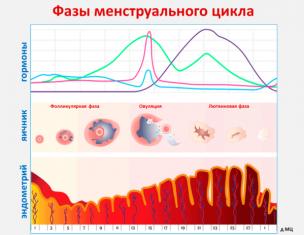Proton pump inhibitors (PPIs) were introduced into medical practice almost a quarter of a century ago. Today they are the most prescribed medicines for the treatment of many diseases of the digestive system. The ancestor is Omez and its analogues. What is this drug and what is it for - let's try to figure it out.
In contact with
general information
Omez is the trade name of a medicine that has become widespread in our country since the 90s of the last century. The drug is based on what is considered the first chemical compound from the class of antisecretory agents.
It has weak alkali properties and suppresses the production of hydrochloric acid in the stomach due to the depressing effect on the proton (cell) pump - this is the name of the biochemical process that occurs in the parietal islets of the stomach.
The effect of omeprazole on acid formation is effective, since it inhibits not only the basal (nocturnal), but also the stimulated daytime secretion of hydrochloric acid, regardless of the type of food consumed.
This allows the use of Omez for heartburn in any gastrointestinal diseases associated with increased acidity in gastric juice and (or) with the presence of gastroesophageal reflux as the main cause of this unpleasant symptom. The antisecretory effect of omeprazole occurs within 60 minutes, reaches a maximum after 2 hours and lasts up to 24 hours.
Other important properties are:
- protection of the mucous membrane;
- reduction in the time of scarring of ulcerative defects in the stomach or duodenum (duodenum);
- elimination of HP infection - Helicobacter pylori (therefore, patients may have a question whether Omez is an antibiotic or not);
- reversible hypertrophy of the producing cells in the stomach.
Important! Full recovery of secretory activity occurs within about 5 days after discontinuation of the drug.

Omez method of application
Omez is manufactured by the Indian pharmaceutical company Dr. Reddy's, an analogue of Omeprazole, is produced by various domestic companies. Release form - capsules of 10 and 20 mg of active substance for oral administration. There is also a form for intravenous infusion - this is a lyophilisate (40 mg of omeprazole in 1 bottle) for preparing a solution with 5% glucose.
Who is the medicine indicated for?
Most gastroenterologist patients know about PPIs and understand what they are buying, an antibiotic or not. Omeprazole is available over the counter for heartburn over the counter. However, it is more correct for the doctor to prescribe a course of treatment, explain the need to take Omez according to the instructions for use and tell him what it is for.
The medicine is effective for many diseases of the digestive system and can be used as the main or additional therapeutic agent, for monotherapy or as part of a set of measures.

possible side effects
The main indications for use:
- treatment of exacerbations of peptic ulcer of the duodenum and stomach, as well as prevention of relapse;
- therapy for GERD (gastroesophageal reflux disease), associated with the reflux of acidic stomach contents into the esophagus;
- relief of hypersecretory pathologies, which include Zollinger's disease, gastrointestinal ulcers caused by stress, etc.;
- participation in schemes for the destruction and removal (eradication) of HP in patients with proven infection, as prescribed by a doctor or according to the instructions for use approved for Omez for gastritis or peptic ulcer disease;
- treatment and prevention of gastropathies caused by damage to the gastric mucosa and duodenum before or after prolonged use of NSAIDs (non-steroidal anti-inflammatory drugs);
- prevention of the development of acid-aspiration pneumonitis (non-infectious inflammation of the pulmonary parenchyma).

Indications for use for children
Is it possible to give medicine to children with similar diseases, or prescribe Omez during pregnancy? The safety and high efficiency of the drug has been proven only in relation to some pathologies of the gastrointestinal tract that occur in childhood. Namely:
- GERD - for patients weighing more than 20 kg (from 4-5 years old);
- duodenal ulcer associated with Helicobacter pylori in children of the same age group.
Important! Expectant mothers and lactating women are allowed this remedy, this is indicated by the instructions for use attached to the Omez preparation.
In the form of a solution for intravenous administration, it is intended exclusively for the treatment of ulcers complicated by the development of gastrointestinal bleeding.
Application methods
 How to take Omez correctly, before or after meals - there are clear instructions on this matter. Preparations based on omeprazole should drink half an hour before meals 1 or 2 times a day depending on the diagnosis and condition of the patient.
How to take Omez correctly, before or after meals - there are clear instructions on this matter. Preparations based on omeprazole should drink half an hour before meals 1 or 2 times a day depending on the diagnosis and condition of the patient.
The capsule should not be chewed; it should be taken with a sufficient amount of plain water to be swallowed.
If it is difficult to swallow Omez, can children or other people open the capsule and mix the powder with food? Such a technique is allowed, only for dissolution it is necessary to use fruit juice, but not milk and carbonated drinks.
The prepared mixture cannot be stored. It is inappropriate to take the drug after eating.
When treating with Omez, the method of application will differ depending on the patient's diagnosis:
- For duodenal ulcers and stomach ulcers, 20 mg is prescribed 1 or 2 times a day (half an hour before breakfast and dinner). The duration of therapy is determined individually from 2 to 8 weeks or more.
- With GERD, the dose is from 1 to 4 capsules per day for 1-2 months according to the severity of esophagitis. For maintenance therapy, Omez is prescribed as an intermittent course of treatment or, on demand, in a minimum dose of 10-20 mg in the morning.
- With hypersecretory pathologies, the dosage can reach 80-120 mg per day, divided into 3 doses. Instructions for use for gastritis with high acidity allow long-term intake of 20 mg of the drug as prescribed by the doctor a, especially with concomitant hernia of the esophagus and other causes of persistent heartburn and the risk of developing Barrett's disease (precancerous degeneration of the epithelium).
- For eradication treatment in patients with HP and duodenal ulcer or stomach ulcer, the drug is included in 3 or 4-component therapy regimens together with two antibiotics and bismuth preparations. The duration of such a scheme is usually 14 days. The dose for the treatment of adults is 2 capsules of 20 mg per day (morning-evening).
- For the prevention and treatment of NSAIDs - gastropathy, 20 to 40 mg of the drug are prescribed every day during the entire time of treatment with non-steroidal drugs.

For what diseases is the medicine prescribed
How to take Omez until adulthood is decided by the attending physician. Usually children's dose does not exceed 20 mg per day, and the duration of therapy is 2 months. O mez during pregnancy, it is advisable to drink according to indications from the second and third trimester in the lowest possible dosage.
Cautions
Instructions for use and doctors always pay attention to possible side effects and contraindications for treatment with one or another drug.
Who should not drink drugs based on omeprazole:
- children under 2-4 years old (body weight less than 20 kg) with peptic ulcer disease or GERD;
- children and adolescents under 15 years of age with other gastrointestinal diseases (gastritis, etc.);
- persons with an indication of allergies and individual intolerance to omeprazole history;
- patients with severe osteoporosis;
- patients with malabsorption syndrome (deficiency of enzymes that digest sugar);
- persons receiving treatment with cytostatics;
- insufficiently examined people with suspected stomach cancer.

The drug has contraindications
The frequency of adverse reactions depends on the initial level of the patient's health, the presence of concomitant pathologies. In most cases the drug is well tolerated... The following undesirable effects of treatment are possible:
- anaphylactic reactions - Quincke's edema, bronchospasm;
- sleep disturbance, irritability or depression;
- dizziness, migraine;
- dermatitis, itchy skin, urticaria;
- vague abdominal pain, nausea, stool retention, flatulence, stomatitis;
- increased levels of liver enzymes, very rarely hepatitis;
- muscle weakness, pain in the spine and joints, bone fractures, the development of osteoporosis.
When treating, it is necessary pay attention to emerging alarming symptoms(weight loss, pain, black stools, or vomiting of blood), which may indicate the presence of malignant neoplasms.
Important! The suppression of acid formation leads to a smoothing of the clinic, therefore there is a danger of delaying the diagnosis of cancer.
A decrease in acidity in the stomach is fraught with the development of pathogenic microflora in the small intestine, while the risk of intestinal infections increases. Long-term PPI treatment leads to decreased absorption of vitamin B12 and the development of anemia. Undesirable consequences can be avoided subject to the recommendations of the doctor who prescribed the drug.
Video: Omez for the treatment and prevention of duodenal ulcers and lesions
Omez, with its indications for use, has gained wide popularity due to its effectiveness and affordable price. Today this drug is trusted by gastroenterologist patients all over the world, as it helps to improve the quality of life of patients with various diseases of the digestive system.









